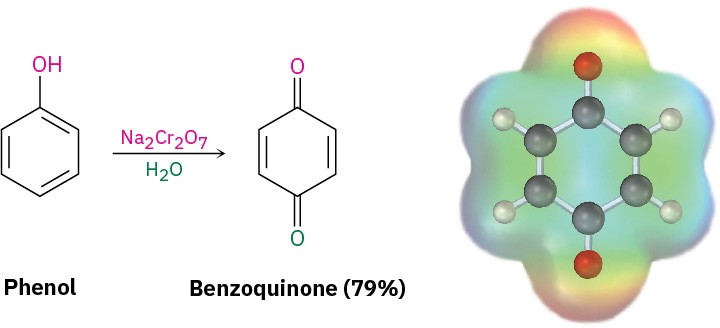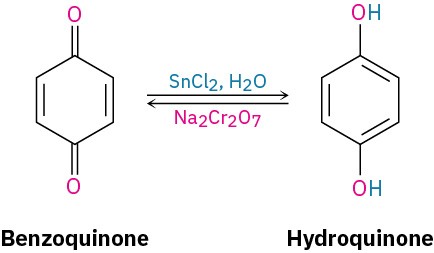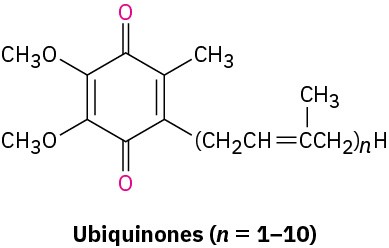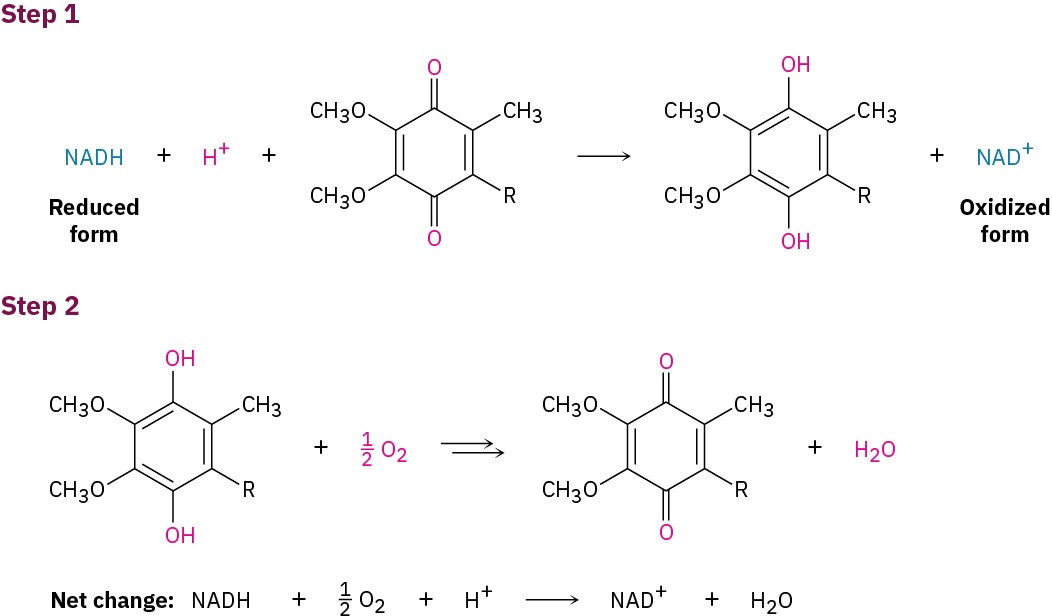17.10 Reactions of Phenols
Electrophilic Aromatic Substitution Reactions
The hydroxyl group is a strongly activating, ortho- and para-directing substituent in electrophilic aromatic substitution reactions (Section 16.4). As a result, phenols are highly reactive substrates for electrophilic halogenation, nitration, sulfonation, and Friedel–Crafts reactions.

Oxidation of Phenols: Quinones
Phenols don’t undergo oxidation in the same way as alcohols because they don’t have a hydrogen atom on the hydroxyl-bearing carbon. Instead, oxidation of a phenol yields a 2,5- cyclohexadiene-1,4-dione, or quinone. Many different oxidizing agents will accomplish the transformation, but potassium nitrosodisulfonate [(KSO3)2NO], called Fremy’s salt, is often used.

Quinones are a valuable class of compounds because of their oxidation–reduction, or redox, properties. They can be easily reduced to hydroquinones (p-dihydroxybenzenes) by reagents such as NaBH4 and SnCl2, and hydroquinones can be easily reoxidized back to quinones.

The redox properties of quinones are crucial to the functioning of living cells, where compounds called ubiquinones act as biochemical oxidizing agents to mediate the electron- transfer processes involved in energy production. Ubiquinones, also called coenzymes Q, are components of the cells in all aerobic organisms, from the simplest bacterium to humans. They are so named because of their ubiquitous occurrence throughout nature.

Ubiquinones function within the mitochondria of cells to mediate the respiration process in which electrons are transported from the biological reducing agent NADH to molecular oxygen. Through a complex series of steps, the ultimate result is a cycle whereby NADH is oxidized to NAD+, O2 is reduced to water, and energy is produced. Ubiquinone acts only as an intermediary and is itself unchanged.


